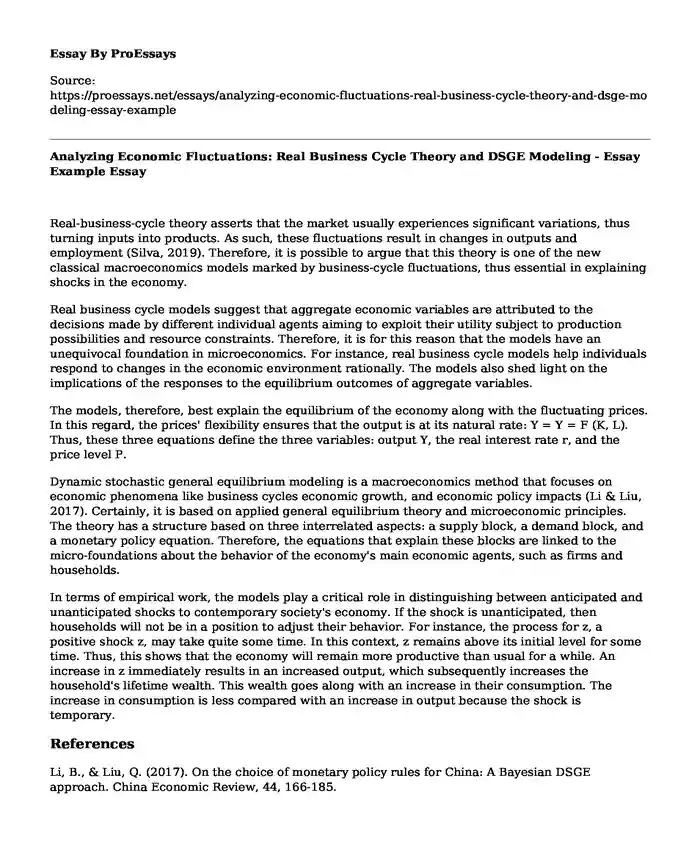Real-business-cycle theory asserts that the market usually experiences significant variations, thus turning inputs into products. As such, these fluctuations result in changes in outputs and employment (Silva, 2019). Therefore, it is possible to argue that this theory is one of the new classical macroeconomics models marked by business-cycle fluctuations, thus essential in explaining shocks in the economy.
Real business cycle models suggest that aggregate economic variables are attributed to the decisions made by different individual agents aiming to exploit their utility subject to production possibilities and resource constraints. Therefore, it is for this reason that the models have an unequivocal foundation in microeconomics. For instance, real business cycle models help individuals respond to changes in the economic environment rationally. The models also shed light on the implications of the responses to the equilibrium outcomes of aggregate variables.
The models, therefore, best explain the equilibrium of the economy along with the fluctuating prices. In this regard, the prices' flexibility ensures that the output is at its natural rate: Y = Y = F (K, L). Thus, these three equations define the three variables: output Y, the real interest rate r, and the price level P.
Dynamic stochastic general equilibrium modeling is a macroeconomics method that focuses on economic phenomena like business cycles economic growth, and economic policy impacts (Li & Liu, 2017). Certainly, it is based on applied general equilibrium theory and microeconomic principles. The theory has a structure based on three interrelated aspects: a supply block, a demand block, and a monetary policy equation. Therefore, the equations that explain these blocks are linked to the micro-foundations about the behavior of the economy's main economic agents, such as firms and households.
In terms of empirical work, the models play a critical role in distinguishing between anticipated and unanticipated shocks to contemporary society's economy. If the shock is unanticipated, then households will not be in a position to adjust their behavior. For instance, the process for z, a positive shock z, may take quite some time. In this context, z remains above its initial level for some time. Thus, this shows that the economy will remain more productive than usual for a while. An increase in z immediately results in an increased output, which subsequently increases the household's lifetime wealth. This wealth goes along with an increase in their consumption. The increase in consumption is less compared with an increase in output because the shock is temporary.
References
Li, B., & Liu, Q. (2017). On the choice of monetary policy rules for China: A Bayesian DSGE approach. China Economic Review, 44, 166-185.
Silva, T. C. D. (2019). Exploiting diversity in macroeconomic modeling: a comparative study between Agent-Based and DSGE macroeconomic models.
Cite this page
Analyzing Economic Fluctuations: Real Business Cycle Theory and DSGE Modeling - Essay Example. (2024, Jan 27). Retrieved from https://proessays.net/essays/analyzing-economic-fluctuations-real-business-cycle-theory-and-dsge-modeling-essay-example
If you are the original author of this essay and no longer wish to have it published on the ProEssays website, please click below to request its removal:
- Essay Sample on Globalization, Immigration and Current US Administration
- Research Paper on Hierarchical Market Entry Modes
- Essay Sample on Global Workforce: The Impact of Leadership on Performance
- Essay Example on Unfair Labor Practices: Violations of Employee Rights
- Karl Marx: Capitalism, Labor & the Proletariat Revolution - Essay Sample
- Oman: International HRM for the 21st Century - Essay Sample
- Become an Entrepreneur: Pursuing Business Management - Admission Essay Sample







